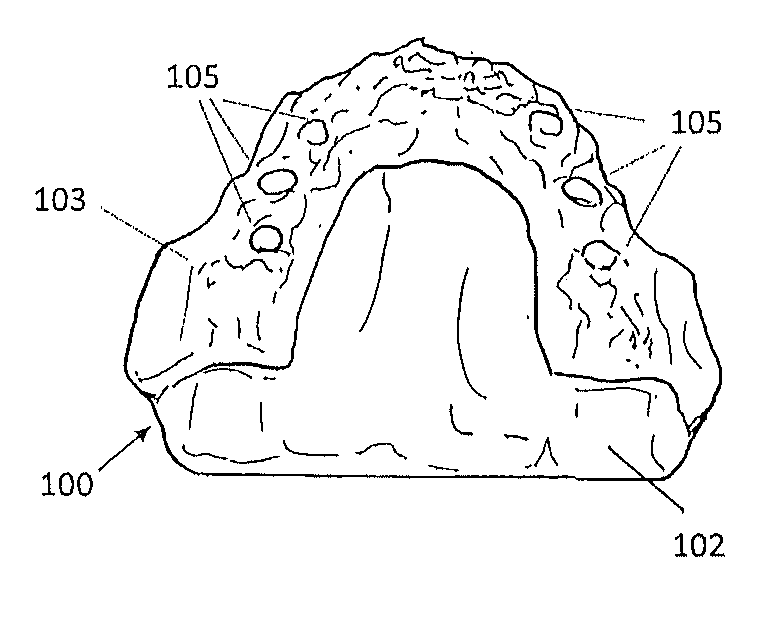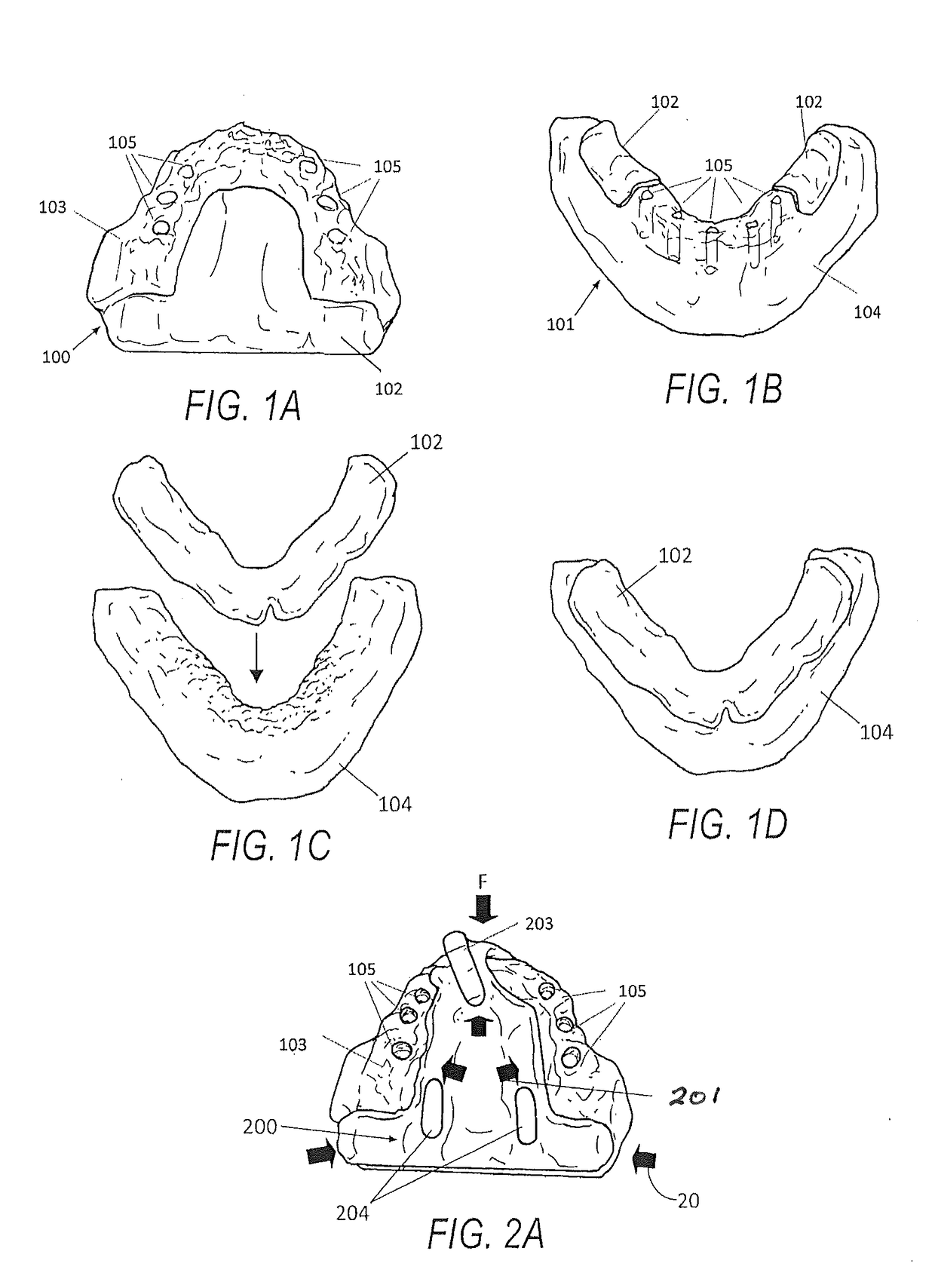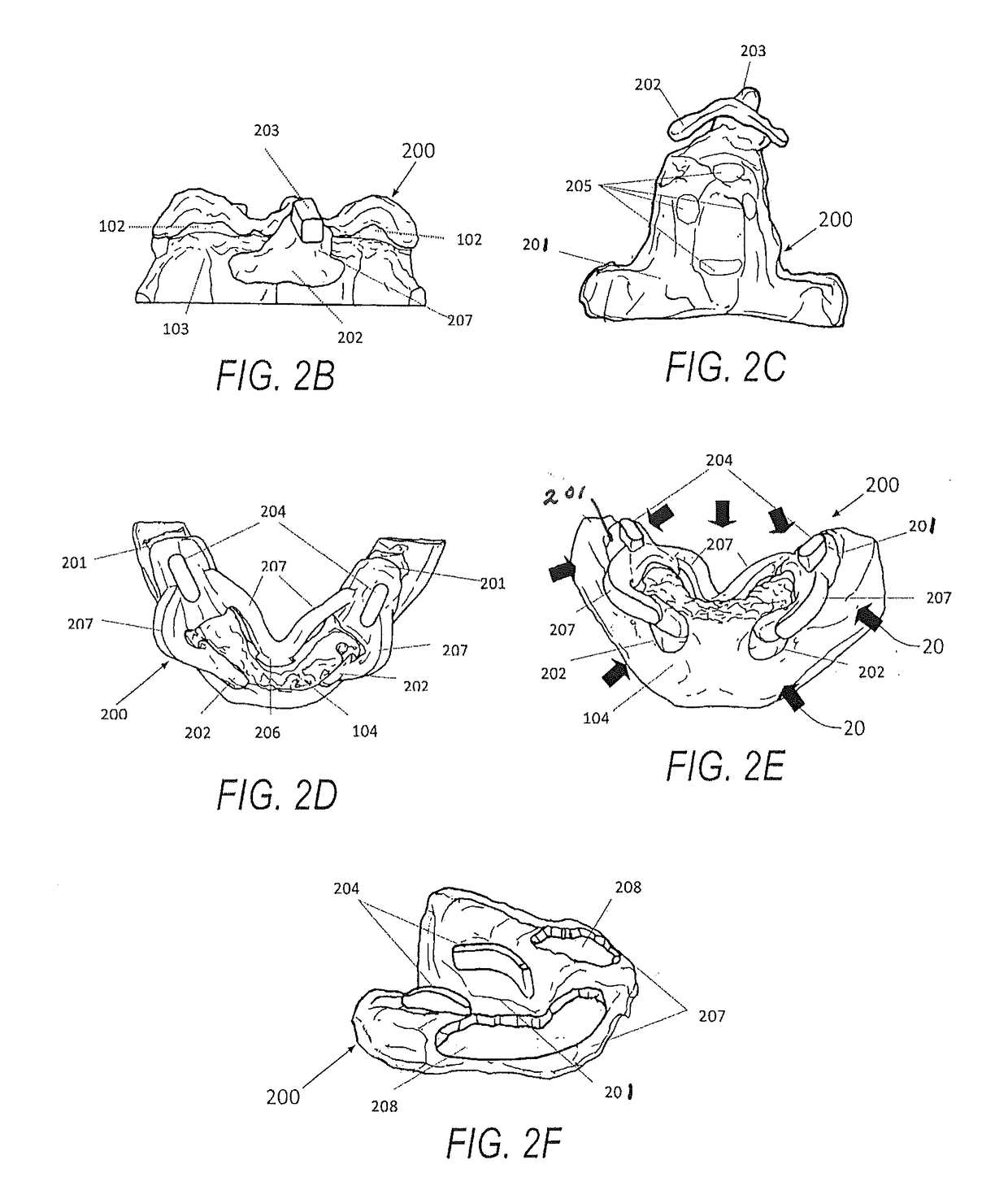Method of using an endentulous surgical guide
a surgical guide and endoscope technology, applied in the field of surgical guides, can solve the problems of invasive amount of gum tissue flapping, poor bone quality, and success of dental implants, and achieve the effects of reducing stress on impression copings and connected implants, reducing time, and facilitating the creation of postoperative master models
- Summary
- Abstract
- Description
- Claims
- Application Information
AI Technical Summary
Benefits of technology
Problems solved by technology
Method used
Image
Examples
Embodiment Construction
[0087]FIGS. 1A and 1B illustrate patient specific digital or physical dental anatomical diagnostic models 100 and 101 that expose the partial upper jawbone bone structures 103 and a lower jawbone 104 at the surgical sites and the areas of interest. In areas where the bone structures are not exposed, the model has gum tissue surface structures 102. As in FIGS. 1A and 1B, these gum tissue surface structures 102 usually appear towards the distal end of the posterior regions and the palatal area of the upper jaws.
[0088]FIGS. 1C and 1D depict a digital image of a lower jawbone 104 and a digital image of the gum tissue surface structures 102 positioned relative to one another, from which diagnostic anatomical models like 1A and 1B are created.
[0089]The bone structure data can be obtained by tomography imaging devices such as CT and CB CT, and may be exported as a file format, such as STL, suitable for reverse engineering and 3D imaging. Then the data file can be accurately aligned with th...
PUM
 Login to View More
Login to View More Abstract
Description
Claims
Application Information
 Login to View More
Login to View More - R&D
- Intellectual Property
- Life Sciences
- Materials
- Tech Scout
- Unparalleled Data Quality
- Higher Quality Content
- 60% Fewer Hallucinations
Browse by: Latest US Patents, China's latest patents, Technical Efficacy Thesaurus, Application Domain, Technology Topic, Popular Technical Reports.
© 2025 PatSnap. All rights reserved.Legal|Privacy policy|Modern Slavery Act Transparency Statement|Sitemap|About US| Contact US: help@patsnap.com



